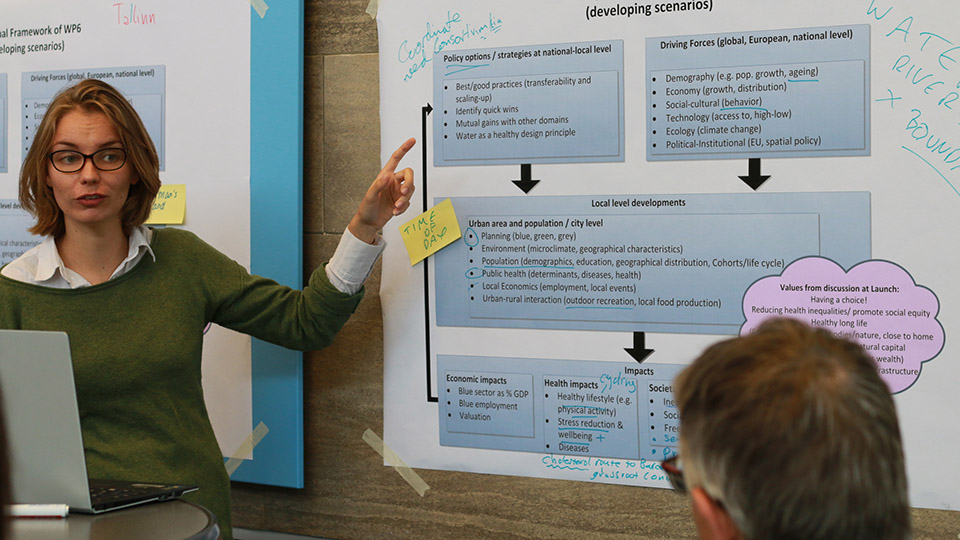Designing for the future
When we talk about ‘future perspectives’ and ‘scenario-planning’ many people think we’re talking a different language. So let me explain…
BlueHealth is all about ensuring we use water-based environments to improve health and wellbeing.
To that end, we’re busy planning a number of experiments across Europe that will show us how to design spaces that make the most of these benefits (whilst also minimising any risks).
But the world is changing and changing quickly. Populations, climates, and environments will all evolve over the coming decades, how do we make sure that our findings aren’t just relevant now but point us in the right direction for the future too?
This question is the focus of the work we’re leading at the Dutch National Institute of Public Health and the Environment (RIVM for short). We’re working on building a number of scenarios that describe what we think the future might look like, based on trends in society, the economy and the environment.
Once we’ve got a set of scenarios, we can then try to figure out how our health might benefit from water-based environments in each of these different ‘futures’.
The challenge begins with identifying the context – which trends are most relevant for making the most of BlueHealth in 2050? We’re considering changes in demography, such as population growth and ageing, and hope to forecast what a future sustainable economy might look like.
We’re also projecting changes in society, culture, technology, ecology and policy; a technique referred to as the DESTEP methodology.

The next step is to take these fairly broad predictions and apply them at a local level. We’ll be doing this for five cities – Barcelona, Thallin, Amsterdam, Malmö, and Thessaloniki – where BlueHealth research projects are planned.
These projects are focusing on specific changes that might improve public health. For instance, assessing whether the construction of a public footpath along a river results in more people walking, or if improved water quality encourages people to swim in a canal.
The crucial issue with these studies is understanding whether the results are also applicable under different conditions and this is where our scenarios come in. They provide a sketch of the criteria and policies needed to achieve a certain health impact.
We’re not just interested in the health outcomes of these projects, but also the governance structures that help them succeed. Which ‘best practices’ can be identified? Which stakeholders are involved and what are their motivations and values? Which instruments were used to make BlueHealth changes?
We hope that by understanding all of these factors our research can inspire policymakers and stakeholders to develop plans that put the right infrastructure in place to maximise BlueHealth benefits.
We kicked this work off last week in Holland and we’ve got a number of workshops planned to develop these scenarios further. Keep an eye on our projects in the Future scenarios area for more updates.




